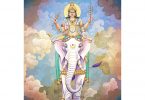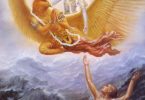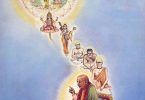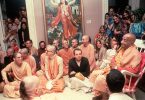Q. I am from Southern part of India and it is true that the deities in South Indian style temples are different from our ISKCON deities. I have heard some people making comments about this and also the way deities are dressed/decorated. One person even asked me if I believe in north Indian Gods and their kind of worship. How should one answer such questions? Another person, very recently at Ratha-yatra, said that dancing along with kirtan does not appear to be an authentic way of worship because being from South India, that person never saw anything like this before.
Answer by Romapada Swami: It is a common occurrence that those who are accustomed -and even attached- to certain forms and modes of worship may initially express reservation about what appears to them as a different, unfamiliar form of worship. But if they can get an opportunity to hear in the right association, soon their misgivings are replaced by genuine appreciation. Oftentimes such persons may not have a deep grasp of the significance behind their own practices either, but are going simply by customary observances or popular opinion.
You can take such exchanges as an opportunity for reflecting and deepening your own understanding of the significance and authoritativeness behind our practices, as well as an opportunity to educate/share it with others. When you express your understanding in a non-confrontational, kind, humble and thoughtful manner, it quickly removes preconceptions and prejudices; and people become not only appreciative, but experience a deepening of their own faith and understanding of spiritual life.
Thus, in a conversation such as the one you have presented, you could direct the discussion to the platform of scriptural authority, rather than certain individual’s personal beliefs/preferences. For example, Deity worship in ISKCON is performed with very high standards, and strictly in adherence with shastras (specifically the Pancaratra standards prescribed for the present age), and following the guidelines and examples set by great acharyas in the line of Lord Caitanya, over many generations — just as much as the Deity worship in South Indian Sri Vaishnava temples are strictly regulated by the procedures established by Ramanujacharya, following another equally valid rendering of the same scriptural tradition.
Were you (or they) to become more familiar with the mantras, mudras, etc connected with deity worship, you (or they) would be astonished to see how the essences of the worship within the Sri Vaisnavas, the Madhva vaisnavas and the Gaudiya vaisnavas are so overlapping, in many cases identical!
You could further point out how it is more important to seek the essence of any religious practice than be attached to the external formularies – although the formal procedures are also important, provided the essence is in place. Conversely, sticking to the ‘form’ without the essence is the prime reason why most spiritual/religious traditions have currently become either dogmatic & fanatical, or have become corrupted beyond recognition. The real essence of religion is to reawaken our dormant loving devotional service to the Transcendental Lord (SB 1.2.6). If a system of religious practice is seen to arouse such genuine, unmotivated devotion very effectively and purely in the lives of so many sincere practitioners, such a system will be accepted with great appreciation by broad-minded persons.
Similarly, dancing for the pleasure of the Deities is also very much a bona fide practice – in fact it is one of the 64 items of devotional service enjoined in Bhakti-rasamrita-sindhu. As discussed in the previous inquiry, there are numerous pastimes of Lord Caitanya and His devotees dancing in ecstasy before the Deities. Such a mood of spontaneous love of God and dancing in joyful adoration of the Lord is very exalted, and before the appearance of Lord Caitanya it was very rarely to be found; but Lord Caitanya – as the most munificent incarnation – distributed it freely and made it available to everyone without consideration of qualifications.
In fact, when Lord Caitanya traveled in South India, where most vaishnavas are accustomed to worshiping Lord Vishnu in a mood of great awe and reverence, they were all struck with wonder to witness the ecstatic dancing and bodily transformations of the Lord. They had never seen anyone or anything quite like this before, but simply by coming in contact with Caitanya Mahaprabhu, they were also invested with spontaneous love of God and began to chant and dance in sankirtana. This is described in Caitanya Caritamrita (Madhya-lila).







